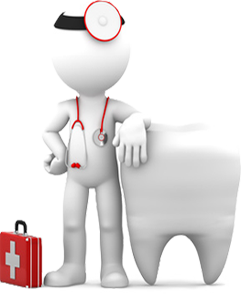The mouth plays an important role in our overall health. It is therefore necessary to maintain good oral hygiene by adopting from a very young age, adéquat behavior . The term "Oral hygiene" generally refers to the care of our teeth. However, we should use the term "oral health" because it includes more concepts such as periodontal disease like (gum) disease, bad breath, maintenance of dentures, etc. To keep a healthy mouth, it is vital to adopt a balanced diet and avoid snacking between meals and sugary sodas that promote the development of dental plaque. In addition, we must take care of our mouth by cleaning at least 2 times per day. To combat some instruments are required:
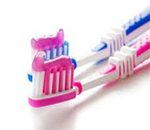
Brushing teeth after every meal helps fight effectively against plaque. It is important to gain since young a good technique. We recommend that you use a toothbrush with soft bristles, nylon, and change when the head appears crushed. Hard toothbrush can abrade the tooth surface and can lead to gingival recession
Toothbrushing technique


Brushing the top and bottom must be done separately. the faces of side cheek teeth and tongue side must be cleaned successively , also top and sides (top and bottom). Start by brushing the teeth of the upper face (top and bottom) with a back and forth motion.
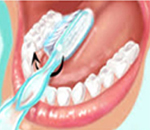
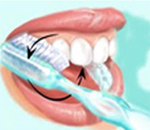
To brush external and internal faces of the teeth, the brush has to be tilted at 45 ° to the junction between the gingiva and tooth. A movement of "roll" is made 2 to 3 times to eject the tooth plaque.
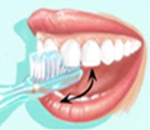
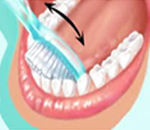
For convenience at the inner side of the front teeth, the brush is placed vertically and in a movement directed from the gingiva to the tooth.
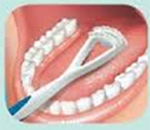
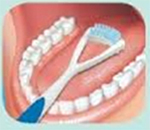
To improve oral hygiene, gently brush your tongue and gingiva to clean them. Dental floss can also be passed between the teeth regularly, but you need to be careful to not damage the gingiva.
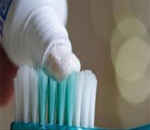
Whether gel or paste toothpaste is an important part of brushing. The range of toothpastes proposed in pharmacy and supermarket is vast. Each toothpaste has its specificity. It may contain various active ingredients (antiseptic, anti-inflammatory, fluoride, calcium, etc ...) that give different properties to meet each particular case. How to Choose toothpaste?
The active ingredients of toothpaste:
Toothpastes may contain various active ingredients (antiseptic, anti-inflammatory, fluorine, calcium, etc ...) that give them different properties. Currently, fluorine is the most effective substance to fight against plaque and enforce the resistance front teeth to decay. In the absence of specific recommendations, so you should use a toothpaste containing fluoride. The whitening toothpastes contain abrasive ingredients that can alter the surface of the enamel if used too intensively. They can be a source of dentinal sensitivity.
There is a fluoride toothpaste for every age:
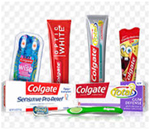
As they do not know how to spit correctly, children must use a toothpaste without fluoride. From the first teeth of children and up to 2 years, brushing is performed once / a day by his parents with water.
- From 2 years old, children can use a fluoride toothpaste between 250 ppm and 600 ppm (meens from 25 to 60 mg per 100 g of fluoride toothpaste), when they know how to spit.
- From 3 years fluoride toothpaste between 500 ppm and 1000 ppm, when the child can spit out.
- Finally, after 6 years, fluoride toothpaste between 1000 and 1500 ppm.
Mouthwasher liquide

After brushing, Mouthwasher liquide is a the key to safer teeth. you need to wash you teeth by this liquide (about 30 seconds) it actively contributes to the removal of plaque and cleans the gingiva, tongue and mucous membranes. Mouthwasher liquide contain low concentration disinfectants but it's sufficient for disinfection of the oral cavity. The use of mouthwasher liquide should be limited to one week, up to 15 days every 3-4 months to avoid damaging the natural bacterial flora of your mouth which may develop fungus. We will advise you on the choice of product to use.
The interdental brush and dental floss
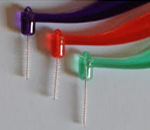
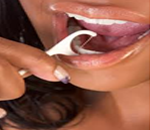
An interdental brush can reach the interstices between each tooth. If the space between the teeth is sufficient, this instrument can be used in addition to the toothbrush. Its use is particularly recommended for wearing braces or in cases of periodontitis.
It is also possible to complete the brushing with the dental floss which will clean the sides of the teeth. we suggest you to consult us first before using it.
The Chewing gum
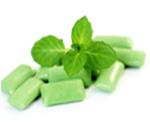
If you are unable to brush your teeth, sugarless chewing gum can help reduce the risk of caries. Indeed, a chewing gum helps salivate profusely. The flow of saliva causes a decrease in oral acidity and therefore reduces the risk of enamel attacks . This solution does not replace brushing teeth.








